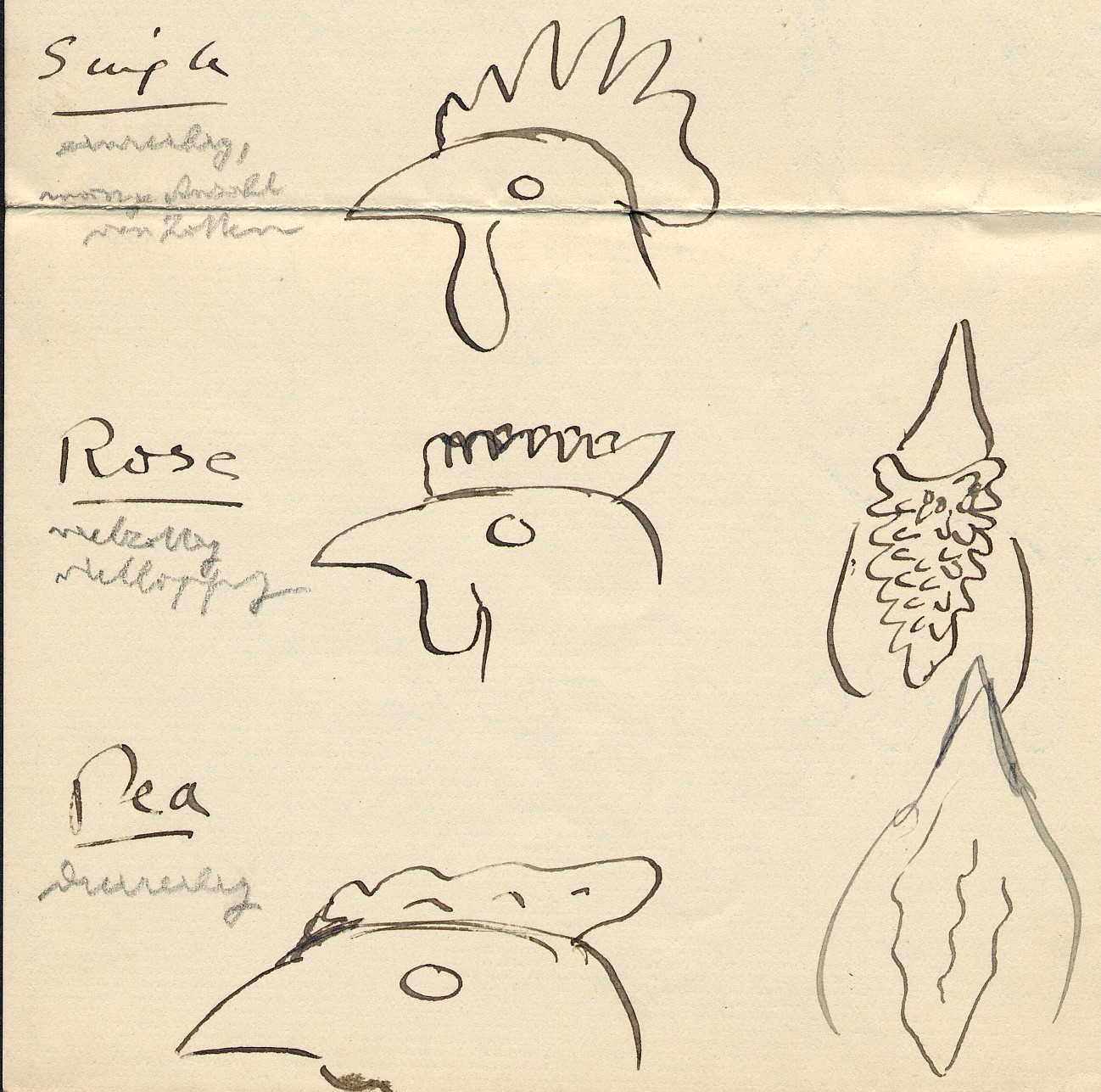Pioneers of Mendelian Inheritance in Animals (PMIA)
1902
Bateson, W.,
Saunders, E.R.
Experimental studies in the physiology of heredity. Part II. Poultry.
Reports to the Evolution Committee of the Royal Society
1: 87-124
As stated on page 1 of Volume 1 of Reports to the Evolution Committee of the Royal Society, its contents were presented to the committee on 17 December 1901. Based on several addenda, all dated March 1902, and a letter advising that copies had been distributed before 20 May 1902 (Jon Bushell, Royal Society), we can conclude that this volume was published sometime between March and the middle of May 1902, most likely in April 1902.
This paper is the second published report of Mendelian inheritance in animals, and the first to report Mendelian inheritance in non-rodent animals. Specifically, Bateson and Saunders provide evidence for Mendelian inheritance of five trait pairs in chickens.
The first sentence in this paper is “Experiments begun in 1898, carried out by W. Bateson”. However, the names of both Bateson and Saunders appear at the head of every second page of volume 1, including this Poultry paper. On the other hand, some of the text is written in the first person (presumably by Bateson). On balance, Saunders has been here included as an author of this paper.
The starting of these experiments two or so years before Bateson or Saunders or anyone else in the English-speaking world knew of Mendel's paper is explained in Bateson's second 1900 paper, described above: the chicken crosses were started solely with the aim of investigating the species problem in evolution. Of course, as soon as Bateson and Saunders became aware of Mendel's paper, they realised that the results of their hybridisation experiments in chickens and in plants provided ideal resources for testing Mendelian inheritance. Amazingly, the original notebooks recording the chicken crosses and their results have been preserved in Cambridge and can be viewed here.
The paper starts by providing details of the breeds used initially, namely Indian Game and White Leghorn, with mention of breeds used subsequently, namely Brown Leghorn, White Dorking and Wyandotte. Observable traits of the breeds are summarised:
Indian Game: pea comb, black mostly) plumage, yellow shank, yellow bill
White Leghorn: single comb, white plumage, yellow shank, yellow bill
Brown Leghorn: same as White Leghorn but with brownish plumage
White Dorking: rose comb, white plumage, white shank, white bill, extra or 5th toe
Wyandotte: rose comb, white plumage, yellow shank, yellow bill
The three types of comb will not be familiar to many readers. Fortunately, Bateson illustrated them in a letter to Erich von Tschermak (one of the three rediscoverers of Mendelism), dated 1st January 1903. (Courtesy of Erich Tschermak collection, archive of the Austrian Academy of Sciences, Vienna; with thanks to Johann Vollmann 11th March 2022)

Details are then provided of pedigrees and results of matings between pairs of the above breeds, of “First Crosses bred together”, and of “Dominant First Crosses bred with Pure Recessive”. Many of the observed numbers are near to expected Mendelian ratios, but there are some exceptions (the latter are discussed under the heading Non-Mendelian Group; pp 110-123).
“Summary of Conclusions from Experiments with Poultry”
- Dominant characters: pea comb, rose comb, extra toe; but crossbred may show some blending. Recessive characters: single comb, normal foot
- Some crosses of dominant animals with recessive gave both dominant and recessive, suggesting that the dominants may not be pure-breeding
- “In White Leghorns, white plumage is dominant over brown plumage”, but not always
- “White shanks and bill are almost wholly dominant over yellow shanks and bill”
- “There is no correlation yet perceived between the characters of comb, foot, and colour of plumage”
The molecular basis of the first four of the trait pairs documented by Bateson and Saunders is now known. For details, see:
OMIA 000782-9031: Pea comb in Gallus gallus
OMIA 000884-9031: Rose comb in Gallus gallus
OMIA 000810-9031: Polydactyly in Gallus gallus
OMIA 000373-9031: Feather colour, dominant white in Gallus gallus
For the other chicken trait, skin/shank colour, the likely causal allele has been identified, but not the actual mutation. For details, see:
OMIA 001449-9031: Skin/shank colour, yellow in Gallus gallus